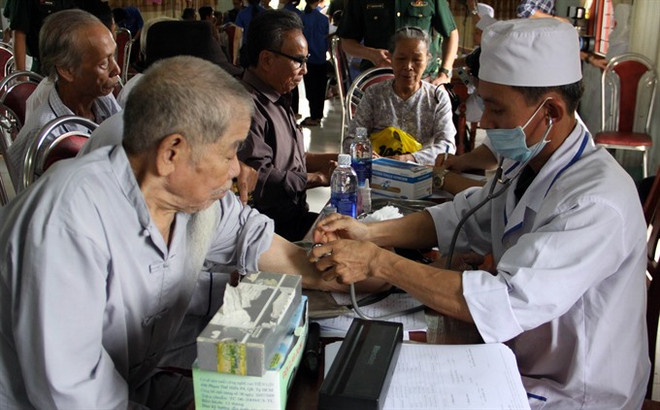 Medical workers treat residents in Hai Chanh commune in the central province of Quang Tri. (Photo: VNA)
Medical workers treat residents in Hai Chanh commune in the central province of Quang Tri. (Photo: VNA)Hanoi (VNA) - The qualityof grassroots-level healthcare facilities nationwide has yet to meetexpectation and patients’ demand, said Minister of Health Nguyen Thi Kim Tien.
It is not necessary for mostpatients to go to central hospitals when their illnesses can be treated atlower-level health facilities, she said at a meeting last weekend on improvingward-level clinics.
“Up to 35.4 percent of patientswho go to central-level hospitals can be treated at provincial and districtlevel hospitals. As many as 41.5 percent who go to provincial hospitals can betreated at district-level health facilities and 11 percent can be treated atward clinics,” she said.
Grassroots-level healthcare facilities have notfulfilled their tasks of taking care of people’s health. Local healthfacilities are able to conduct an average of only 68.3 percent of medicaltechniques among 76 services. Facilities of the lowest quality can perform lessthan 20 percent of the services.
There are a limited number ofmedicines covered by health insurance at the grassroots level. Some types ofmedicines are not even available, she said.
Doctors at ward clinics are notallowed to prescribe medicine for high blood pressure and diabetes. Onlydistrict and provincial level hospitals can do so. A number of clinics do nothave doctors. For these reasons, patients do not choose grassroots healthcareservices, she said.
Twenty-six clinics in wards andtowns of eight cities and provinces have been selected to implement a pilotprogramme by the health ministry on improving the quality of grassroots-levelhealthcare. However, most of the clinics need to upgrade their infrastructureand medical equipment to effectively implement the programme.
Tien said that among thoseselected clinics for the trial period, only healthcare facilities in Hanoi, Ho ChiMinh City and northern Yen Bai province have enough doctors. Other localities suffer a shortage of doctorsand traditional physicians.
The health minister said that the key healthcarefacilities in the programme will be equipped with beds, drug cabinets, X-raymachines, ultrasound and testing machines if necessary.
To address the shortage ofdoctors, staff will be rotated to work at each clinic for two to three days aweek. Nurses and physicians will be moved to balance the numbers whileadministrators at the local clinics will be professionally trained, she said.
In the 2018-20 period, thehealth minister will send professional healthcare workers from centralhospitals and grassroots-level healthcare facilities in Hanoi and HCM City toassist ward and town clinics in disadvantaged areas including Lao Cai province’sBat Xat district, Yen Bai province’s Tran Yen district, Ha Tinh province’s HuongSon district and clinics in the capital city’s suburban areas like Ba Vi, DanPhuong, Ha Dong, Nam Tu Liem districts.-VNS/VNA




























